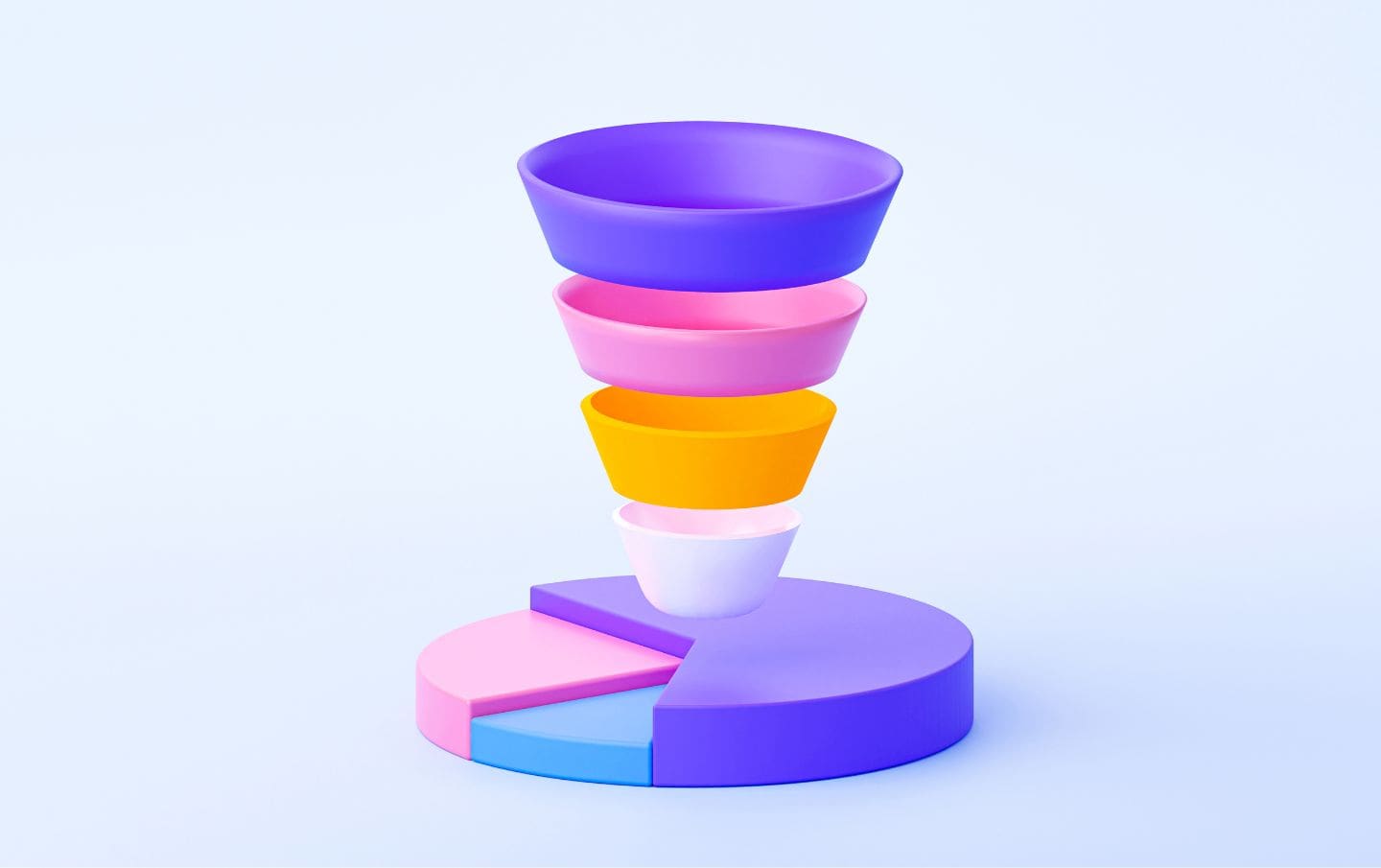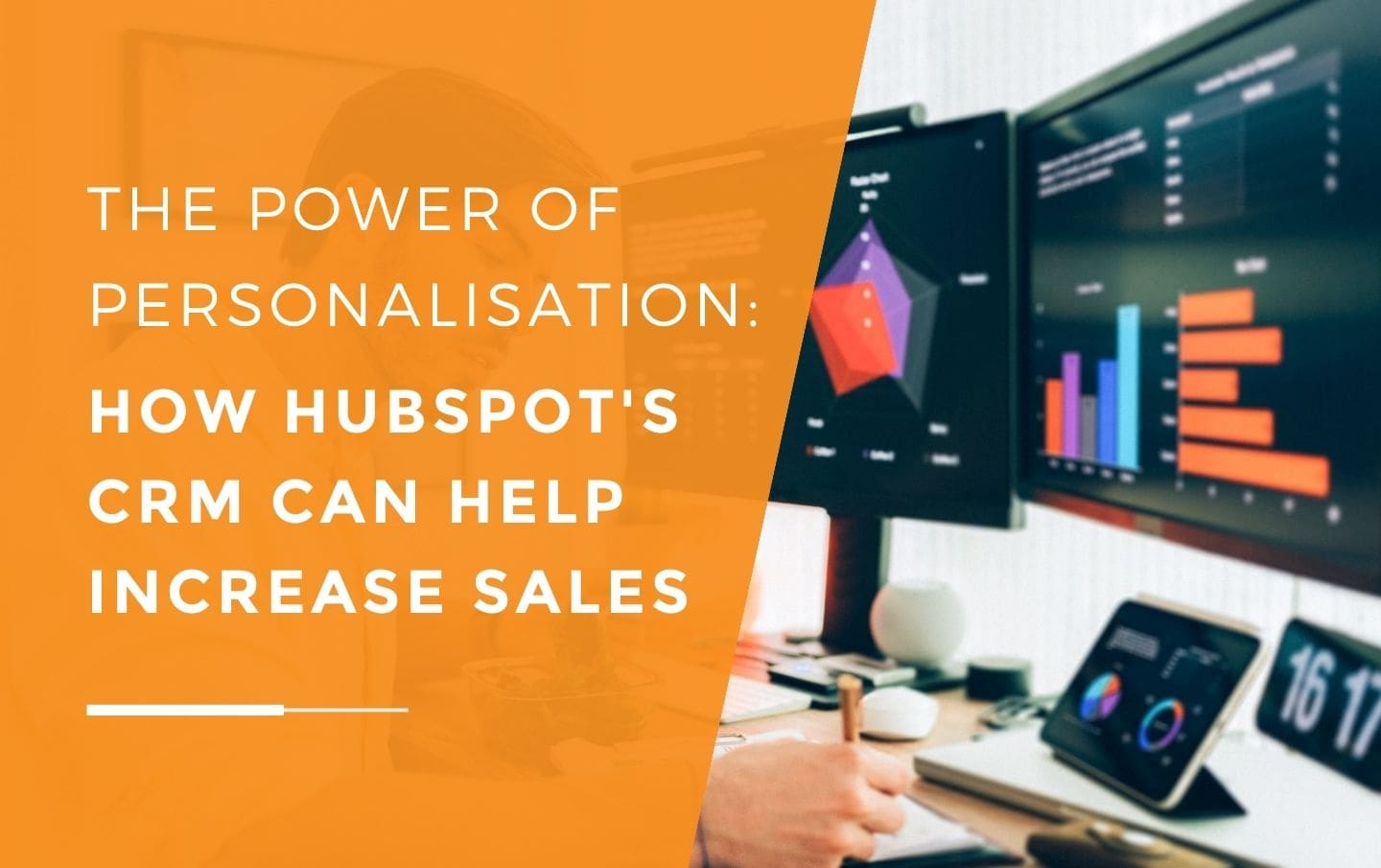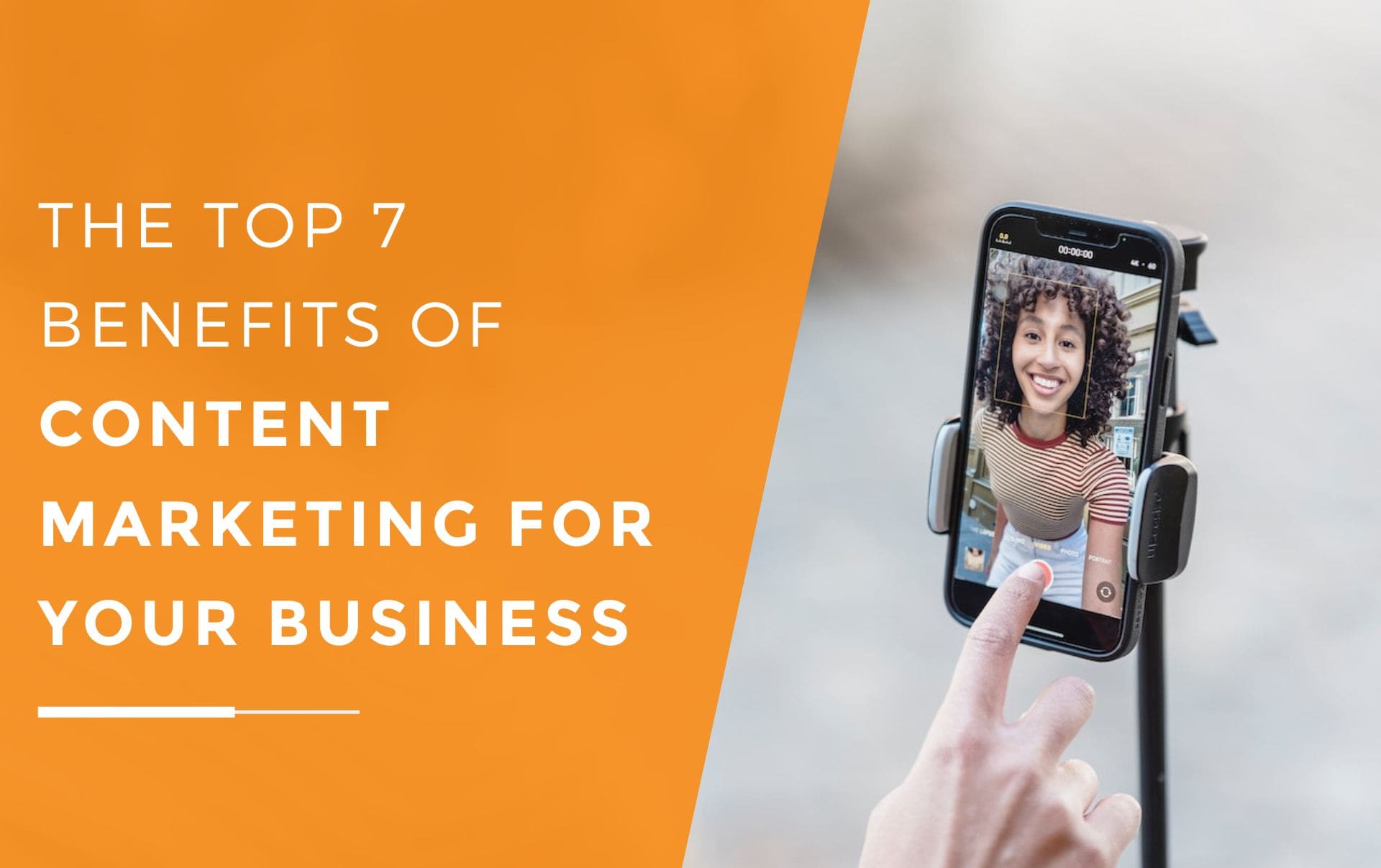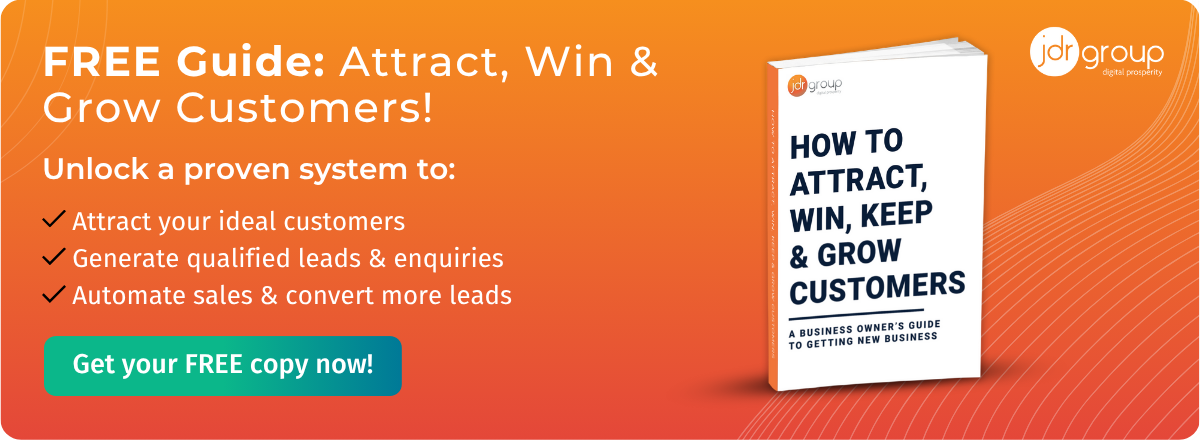Mastering The Sales Funnel: 5 Proven Strategies For Converting Leads Into Paying Customers
by Andy Gibbins on 21-Jun-2023 12:00:00

The sales funnel plays a crucial role in effectively converting leads into paying customers. There are numerous tools and channels available for business owners to make sales – social media, email marketing, and PPC etc, but it’s important to distinguish these methods from the sales funnel itself.
A sales funnel is a conceptual model that captures the typical journey of a customer starting from the awareness stage, through consideration, all the way down to making a purchase. This funnel can be broken down into several different stages based on the prospect’s level of knowledge, priorities, and level of engagement. In this article, we'll discuss 5 strategies for mastering the sales funnel and converting complete strangers into loyal customers.
1. Start With The Right Message
One of the most crucial factors in moving leads through your sales funnel is to make sure you are targeting the right audience with the right content, at the right time. A persona-centred marketing approach involves segmenting your leads according to demographic, behavioural, and psychographic criteria. This allows you to tailor your marketing messages to their specific needs at every stage of the sales funnel/buyer’s journey, which makes it more likely that they will progress from one stage to the next, until ultimately, they are ready to make a sale.
Start by identifying the key features and benefits of your product or service and the questions that your prospects may have at each stage, and then craft content that highlights these features in a way that resonates with your target audience. At the awareness stage, for instance, your prospect’s priority will be determining a potential solution to the challenge they are experiencing – they won’t be interested in technical details, your company history, or even price at this stage. If your content isn’t aligned with your prospect’s present priorities, they won’t give it their time. To convert, your content must resonate with where your prospect is on their buyer journey today.
2. Use Lead Magnets
Lead magnets are essentially freebies that you offer to your leads in exchange for their contact information. The idea behind this is to provide value and useful material upfront so that the leads are more likely to trust you and engage with your business. A lead magnet can be anything from an ebook to a free consultation, or even a free email course or webinar series, as long as it provides value to your target audience. Once you have their contact information, you can nurture these leads through the rest of the sales funnel. Ebooks or guides are a popular choice because you can advertise them through a pop-up window on your website, immediately drawing your visitors’ attention and encouraging more signups for your email list. Start with one general interest ebook on your home page for awareness stage leads, and then expand your resource library into a range of guides and incentive content relevant to each stage of the buyer journey.
3. Create A Sense Of Urgency
People generally don’t act unless there is a sense of urgency involved, such as a deadline or a time-limited deal. Leads usually go cold, therefore, unless there is an incentive for the person to take action. Creating a sense of urgency in your content is a powerful way to move leads through the sales funnel and shorten your sales cycle. You can try and create this urgency ‘around you’ by offering limited-time promotions or discounts – but a more effective way is to highlight the urgency of the prospect finding a solution to their challenges, e.g. how acting now or investing in such and such solution can save time and money and prevent future problems. Make the urgency about them for the best results. You can also use social proof, such as customer reviews or case studies, to show the prospect how prompt action by another customer yielded XYZ benefits. This strategy is particularly effective in the consideration stage of the sales funnel where leads are comparing different options and service providers.
4. Nurture Leads
In digital marketing, ‘cold sales’ are rarely made overnight, so nurturing leads through the sales funnel over the course of weeks or months is crucial for maximising conversions and sales revenues. You want to ensure that you're staying in touch with your leads and providing them with valuable information that moves them closer to making a purchase, not letting the conversation go cold or allowing your stream of content to dry up. You can maintain your conversation with prospects through email marketing, social media marketing, or many other forms of digital marketing; the key is to provide value to your leads with every communication or touch point and build a relationship with them over time.
5. Close The Deal
Closing the deal is the final stage of the sales funnel where leads are converted into customers. This is where you want to make sure that your messaging is completely aligned with the financial and strategic needs of your potential customer. This is when many sales fall through, so you’ll need to have content available that answers questions relating to implementation, quality assurance, technical details, payment terms, and after-sales care, and be ready to address any concerns they may have. It's important to have a clear call to action in all decision-stage content and a defined sales process in place to make the purchase and onboarding process as easy and seamless as possible.
Find Out More
To find out more about how to tailor the sales funnel and your digital marketing strategy to the needs of your customers in order to boost conversions, please contact JDR Group’s digital marketing team today, or download our free guide on How To Attract, Win, Keep And Grow Customers.
Image Source: Canva
- Inbound Marketing (SEO, PPC, Social Media, Video) (823)
- Strategy (361)
- Sales & CRM (193)
- Marketing Automation & Email Marketing (190)
- Business Growth (162)
- Website Design (160)
- Hubspot (137)
- Lead Generation (115)
- Google Adwords (98)
- Content Marketing (94)
- Conversion (48)
- Case Studies (47)
- News (47)
- Ecommerce (39)
- Webinars (34)
- SEO (24)
- AI (19)
- Events (19)
- Video (17)
- LinkedIn Advertising (15)
- Video Selling (15)
- Software training (13)
- Niche business marketing (11)
- The Digital Prosperity Podcast (10)
- Facebook Advertising (6)
- HubSpot Case Studies (5)
- December 2025 (7)
- November 2025 (6)
- October 2025 (17)
- September 2025 (16)
- August 2025 (14)
- July 2025 (14)
- June 2025 (5)
- May 2025 (19)
- April 2025 (15)
- March 2025 (13)
- February 2025 (13)
- January 2025 (8)
- December 2024 (2)
- November 2024 (4)
- October 2024 (21)
- September 2024 (4)
- August 2024 (8)
- July 2024 (14)
- June 2024 (16)
- May 2024 (25)
- April 2024 (15)
- March 2024 (18)
- February 2024 (5)
- January 2024 (10)
- December 2023 (6)
- November 2023 (10)
- October 2023 (13)
- September 2023 (12)
- August 2023 (14)
- July 2023 (13)
- June 2023 (14)
- May 2023 (15)
- April 2023 (13)
- March 2023 (14)
- February 2023 (13)
- January 2023 (15)
- December 2022 (13)
- November 2022 (6)
- October 2022 (8)
- September 2022 (22)
- August 2022 (15)
- July 2022 (13)
- June 2022 (16)
- May 2022 (14)
- April 2022 (16)
- March 2022 (17)
- February 2022 (11)
- January 2022 (8)
- December 2021 (6)
- November 2021 (7)
- October 2021 (11)
- September 2021 (10)
- August 2021 (7)
- July 2021 (7)
- June 2021 (4)
- May 2021 (4)
- April 2021 (1)
- March 2021 (3)
- February 2021 (5)
- January 2021 (4)
- December 2020 (7)
- November 2020 (6)
- October 2020 (5)
- September 2020 (9)
- August 2020 (18)
- July 2020 (17)
- June 2020 (17)
- May 2020 (10)
- April 2020 (21)
- March 2020 (24)
- February 2020 (21)
- January 2020 (12)
- December 2019 (23)
- November 2019 (12)
- October 2019 (14)
- September 2019 (16)
- August 2019 (15)
- July 2019 (13)
- June 2019 (6)
- May 2019 (8)
- April 2019 (4)
- March 2019 (2)
- February 2019 (2)
- January 2019 (2)
- December 2018 (3)
- November 2018 (24)
- September 2018 (11)
- August 2018 (9)
- June 2018 (3)
- May 2018 (6)
- April 2018 (14)
- March 2018 (12)
- February 2018 (16)
- January 2018 (15)
- December 2017 (15)
- November 2017 (18)
- October 2017 (23)
- September 2017 (19)
- August 2017 (28)
- July 2017 (27)
- June 2017 (25)
- May 2017 (18)
- April 2017 (17)
- March 2017 (16)
- February 2017 (17)
- January 2017 (14)
- December 2016 (21)
- November 2016 (27)
- October 2016 (25)
- September 2016 (16)
- August 2016 (20)
- July 2016 (19)
- June 2016 (14)
- May 2016 (20)
- April 2016 (24)
- March 2016 (22)
- February 2016 (28)
- January 2016 (27)
- December 2015 (28)
- November 2015 (19)
- October 2015 (9)
- September 2015 (12)
- August 2015 (5)
- July 2015 (1)
- June 2015 (10)
- May 2015 (3)
- April 2015 (11)
- March 2015 (14)
- February 2015 (15)
- January 2015 (12)
- December 2014 (2)
- November 2014 (23)
- October 2014 (2)
- September 2014 (2)
- August 2014 (2)
- July 2014 (2)
- June 2014 (7)
- May 2014 (14)
- April 2014 (14)
- March 2014 (7)
- February 2014 (2)
- January 2014 (7)
- December 2013 (9)
- November 2013 (14)
- October 2013 (17)
- September 2013 (3)
- August 2013 (6)
- July 2013 (8)
- June 2013 (4)
- May 2013 (3)
- April 2013 (6)
- March 2013 (6)
- February 2013 (7)
- January 2013 (5)
- December 2012 (3)
- November 2012 (2)
- September 2012 (1)
Subscribe by email
You May Also Like
These Related Blogs

Is Your Sales Process Holding Your B2B Business Back?
While most businesses plan their marketing strategy and their service delivery process with meticulous detail, the sales process is often left to look …

The Power Of Personalisation: How HubSpot's CRM Can Help Increase Sales
One of the enduring criticisms of the digital marketplace is how online sales have ‘depersonalised’ business interactions.

The Top 7 Benefits Of Content Marketing For Your Business
Content marketing is the process of creating and distributing valuable, relevant, and consistent content to attract and retain a clearly defined audie …




